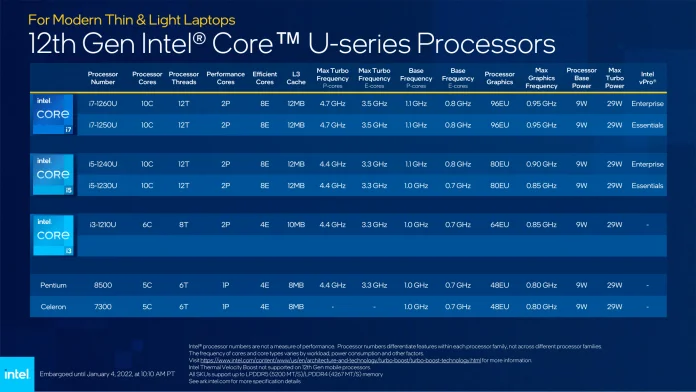Intel has not completely unexpectedly expanded the Core 12000 “Alder Lake” family of laptop processors, where specifications were already revealed under CES Earlier this year. Now they are officially launched, and to refresh the memory, specifications from earlier are repeated with some new details, which will be available in fresh laptops from March.
Intel’s 28-watt segment for what has become a growing mid-range of laptop circuits has a lot of news. Although not directly related to the hardware itself, Intel has got rid of the suffixes G1, G4 and G7, which were previously used to distinguish between which graphics circuit a particular processor had. Instead, Intel has segmented the new processors in a slightly different way and also changed the number combination slightly. Where previously a five indicated a processor with 28 W TDP, it is now a P at the end that applies.
–
–
The P models will be a total of six new processors; three Core i7, two Core i5 and one Core i3. The Core i7 models get a graphics circuit with 96 computing units, while the Core i5 gets a slightly weaker graphics part with 80 computing units and the Core i3 processor has to settle for 64. The frequency of the graphics part is between 1,100 to 1,450 MHz depending on the model.
When it comes to processor cores, Intel has a slightly different strategy than before, largely due to the efficient Gracemont cores. For the first time, Intel also has a processor with six performance cores in this segment, as the Core i7-1280P has six Golden Cove cores and eight Gracemont cores. Otherwise, there are no major surprises in this segment of processors.


